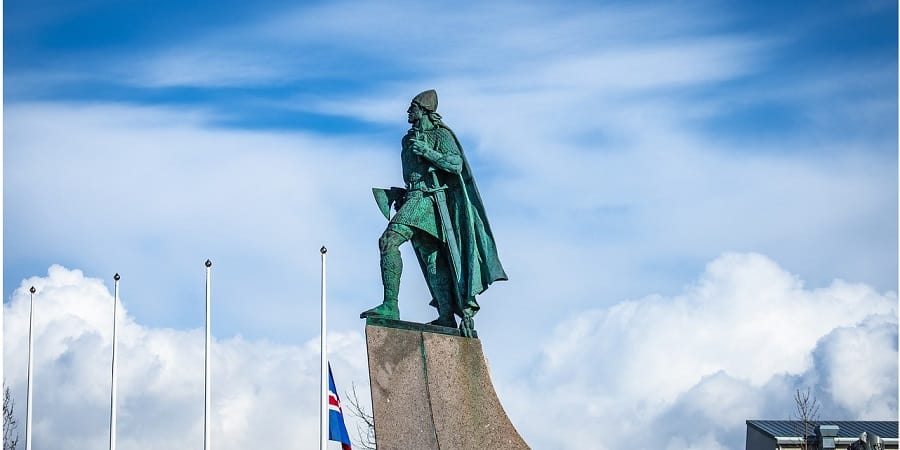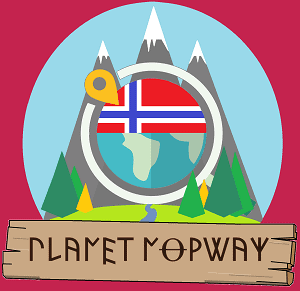The TV show Vikings have brought to life so many important Viking figures from history, but many people are still unaware of the real history of these people.
From Ragnar Lodbrok to Leif Eriksson, who discovered North America centuries before Columbus, many have entered the cultural consciousness.
We’ll look at these Vikings and more as we look through the 10 most famous Vikings in history. They were not only great warriors but strong Kings, unifiers, and explorers.

Ragnar Lodbrok
Ragnar Lodbrok is a legendary Viking hero and King. He is known from multiple sources of Norse poetry, Icelandic sagas, and chronicles.
According to legend, Ragnar was the son of the Viking king Sigurd Ring. It is said that he claimed to be a direct descendant of Odin himself.
Ragnar distinguished himself by conducting many raids against the kingdoms of the British Isles and states within the Holy Roman Empire in the 9th century.
His most famous raid is when he according to Frankish accounts laid siege to Paris in 845. After sailing up the Seine river, Ragnar defeated the forces of Charles the Bold and only retreated after receiving a King’s ransom of 7,000 pounds of silver.
Ragnar is said to have met his fate when he attempted to raid the kingdom of Northumbria with only 2 ships. According to the legend, he was defeated and captured by king Ælla who threw him into a pit snake pit to die in agony.
Recently, a fictionalized version of the character can be found on the TV series “Vikings” where he is portrayed by Travis Fimmel.
The sons of Ragnar
According to legend, Ragnar had many sons with different women. Most prominently he is said to have fathered Björn Ironside with the famous shieldmaiden Lagertha. Later he married Aslaug With whom he had the sons Ubbe, Sigurd, Hvitserk, and Ivar.
Sigurd came to be known as Sigurd Snake-in-the-eye, as his iris had the image of a snake encircling the pupil, while Ivar became known as Ivar the boneless.
All of his sons grew up to become important historical figures in the Norse sagas, taking up their father’s mantle as great warlords and kings.
This is in part how Ragnar came to meet his fate. His decision to raid England with only two ships came as a result of not wanting to be outdone by his emerging sons.
According to the tale. Upon hearing of their father’s death at the hands of King Ælla. They assembled what became known as the great heathen army and Invaded England in 865.
The army was led by Ivar from 865 to 870, during which the Vikings captured York and killed King Ælla, avenging the death of their father.
Eventually, a treaty was agreed upon between the Vikings and King Alfred the Great of Wessex that gave the Vikings control in much of the northern and eastern parts of England.
According to the saga, Ragnar’s sons eventually go on to become rulers over different areas of Scandinavia.
Also, it is claimed that Sigurd’s great-granddaughter goes on to marry Halfdan the black with whom she had a son who would go on the become the first king of Norway, Harald Fairhair.
Leif Eriksson
Lief Eriksson founded the first Viking settlement of what is now called Greenland. He was the son of the famous Viking King, Erik the Red.
When he sailed to Norway, King Olaf I converted him to Christianity, providing one of the breaking points of the old and new religions of Scandinavia.
Perhaps most importantly, he is thought to be the first European ever to reach Vinland, what we call North America. However, after only spending one winter there, he returned to Greenland without exploring further.
There he met with the “Red Indians,” according to the Saga of Erik the Red. This was an amicable encounter, with a good trade agreement until some incidents caused problems.
Cnut the Great
Cnut the Great was a King of England, Denmark, and Norway. He began as a Danish prince who then captured the throne of England in 1016, and when he became King of Denmark, he united the two.
After a further conflict with rivals, he eventually took the Norwegian throne as well in 1026.
This takeover of England established important trade routes and influence between the nations that would last for decades and centuries afterward.
He declared himself King of all three nations in front of the coronation of the Holy Roman Emperor in 1026. His rule, which lasted until 1035, is admired even today for its effectiveness and longevity.
Erik the Red
Erik the Red is most famous for building the first settlement in Greenland. After his exile from Iceland, he sailed there for multiple counts of manslaughter after many inter-clan battles had broken out in 980.
After finding a route through the ice and getting settled himself, he brought back some 400 people on 25 from Iceland and formed the first European colony on Greenland.
One of his children was the famous Leif Eriksson, who discovered North America four hundred years earlier than Columbus. He was the one named Greenland, hoping to get followers to help him build a colony.
Rollo of Normandy
Rollo was the first ruler of Normandy, an area of northern France. He was considered a formidable warrior and had invaded and seized large swaths of Europe.
He became ruler of the Viking settlements of Normandy in 918 and ruled until 928 and was succeeded by his son William Longsword.
He converted to Christianity in a deal with the Frankish King Charles the Simple in 911. This conversion was held up as a paragon example of Christian virtue, although the details are embellished.
Many of Rollo’s descendants would go on to shape the history of France and England. One of which was William the conqueror.
descendant of Rollo, William would go on to invade and conquer England after defeating and killing King Harold in the Battle of Hastings in 1066.
Harald Finehair
Harald Finehair (or Fairhair) is the legendary first King of Norway. He is likely an actual historical figure, but stories about him are mixed with myth and legend. He is supposed to have reigned from 872 to 930.
Before Harald’s reign, Norway was a series of warring clans and settlements that mostly raided one another. However, under his leadership that many of these clans came together and become a proper kingdom.
Because of this, Harald is regarded in these stories as the first unifier of Norway. Today, he is a national icon of Norway and a symbol of their independence.
Harald Hardrada
Harald Sigurdsson was another King of Norway, also known as Harold III. He ruled from 1046 to 1066.
He was famous for trying to claim the Danish and English thrones during his rule. He spent 15 years in exile after he and his half-brother Olaf Haraldsson bought to reclaim the Norwegian throne, which he had lost to Cnut the Great.
At one time, he was the commander of the Byzantine Varangian Guard and learned to lead well.
Olaf Haraldsson (St. Olaf)
Olaf Haraldsson, or Saint Olaf, was famous for reigning Norway from 1015 to 1028. He was given his sainthood after his death in the battle of Stiklestad for spreading Christianity broadly to the Vikings.
He was a great Norwegian warrior and leader and was baptized into Christianity after a great experience with French Christianity in Normandy. He set Christianity as the standard in Norway during his reign.
His story is important to the national identity of Norway and is a symbol of their independence and pride. He is symbolized by the ax in Norway’s coat of arms.
Olaf Trygvasson
Olaf Tryggvason is another King of Norway. He ruled from 995 to 1000 as the son of Tryggvi Olafsson and is named Olaf I. He was the first Norwegian King to push for the conversion of Norway from the Norse religion to Christianity, often threatening his subjects with violence.
The first official Christian church in Norway was built under his rule in 995. There is a statue of him in Trondheim’s central plaza, a city he founded in 997. Christianity was already widespread in Western Europe at the time, but the North remained a stubborn bastion of heathen belief.
